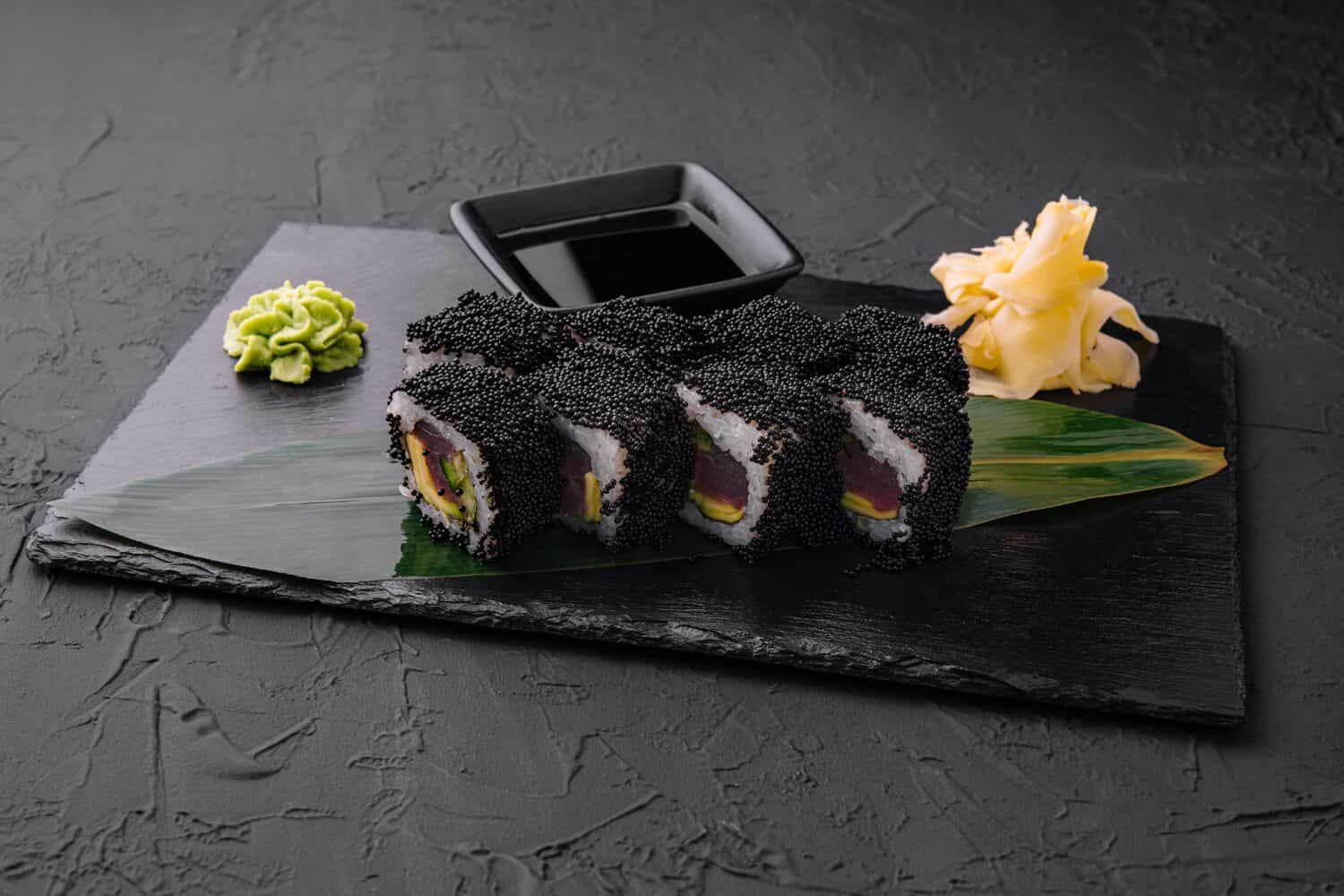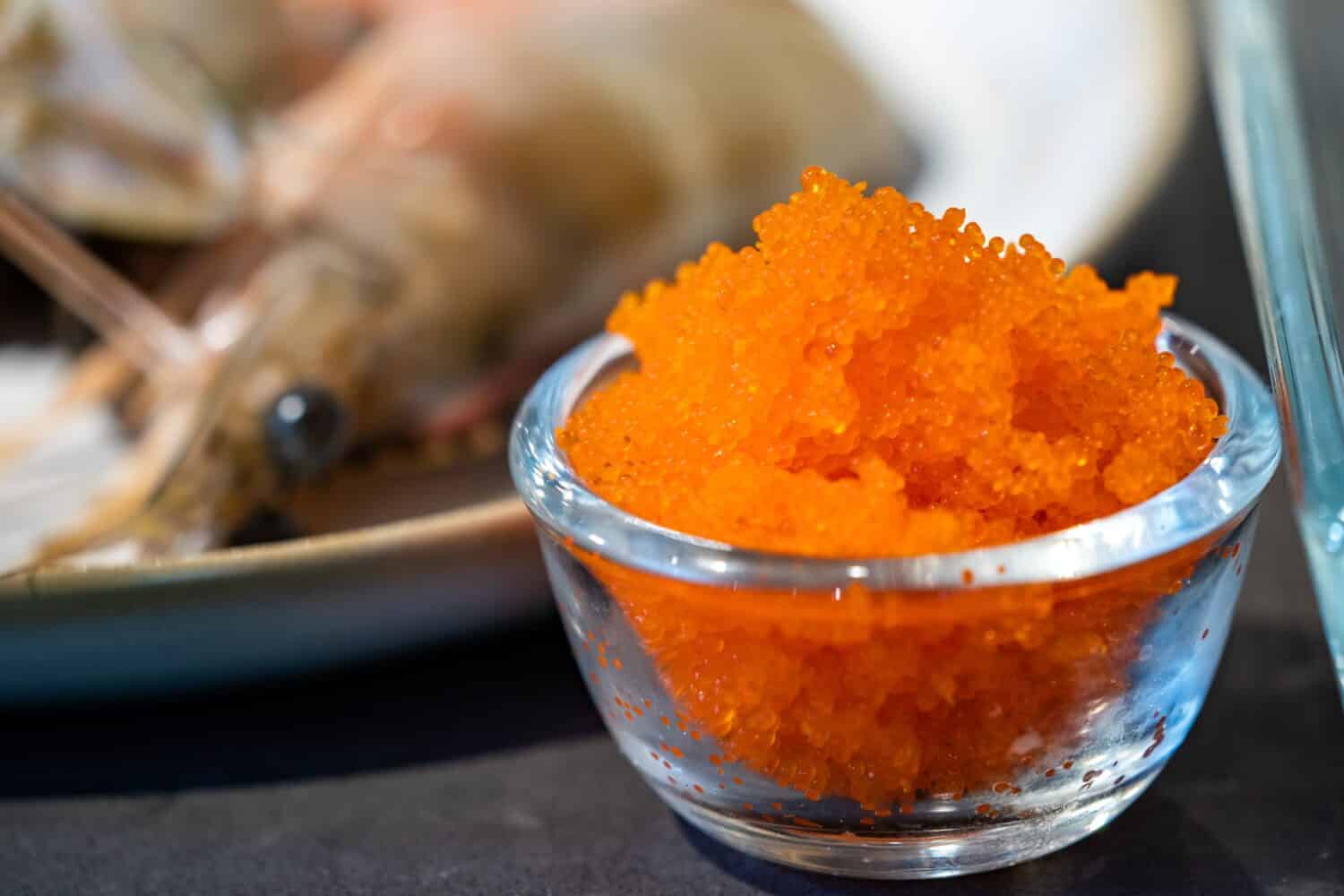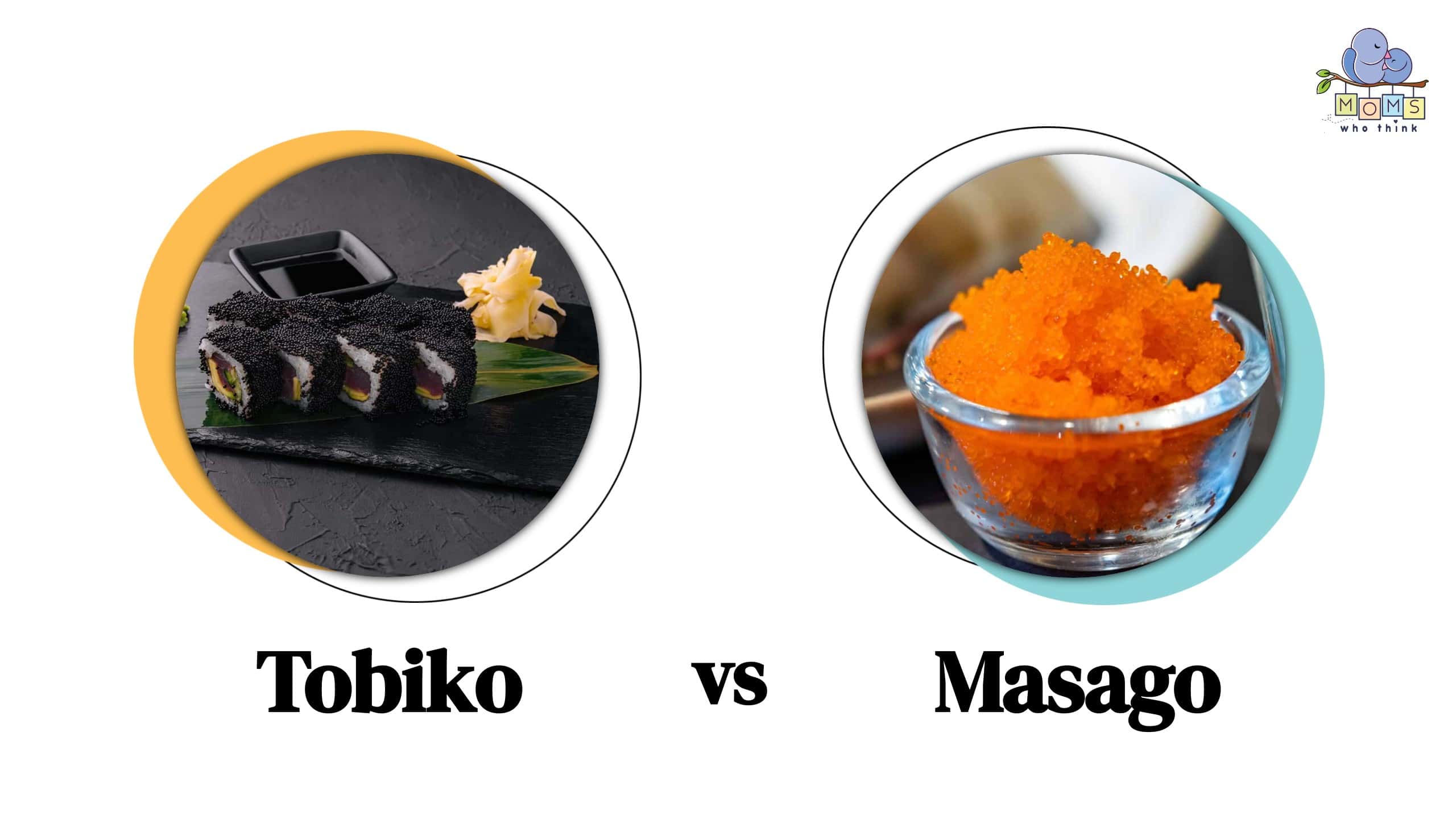Used in Japanese cuisine, tobiko and masago are fish eggs often used in sushi dishes. Although they are often used interchangeably, there are some significant differences between the two. The main difference between tobiko and masago is that tobiko is roe or fish eggs from flying fish and masago is roe from smelt fish. If they look similar, how different can they really be? Let's take a further look and learn more about their taste, texture, and other characteristics that set them apart.

Although most commonly used with sushi, both tobiko and masago can be used to make a sauce.
©AntAlexStudio/Shutterstock.com
Tobiko vs. Masago: Taste, Texture, And Color
Tobiko is going to offer more of a crunchy texture, these eggs feel like they pop as you eat them. It has a mild flavor with slight sweetness as well as citrus and smokey undertones. These eggs can be processed in many different ways which will affect the taste of each. Golden tobiko is the most pure form of tobiko and is cured with only salt. Orange tobiko is typically commercially processed and offers the sweet and citrus flavors mentioned previously. Black tobiko is infused with squid ink which gives the eggs a rich umami flavor with undertones of nuttiness. Red tobiko is infused with beets or chilis which gives it its rich and deep vibrant red color. Yellow tobiko is infused with lemon making it very citrusy. Green tobiko is infused with wasabi which will give it a spicy flavor.
Masago, like tobiko, can be processed in many different ways that will affect its flavor. Orange masago has a mild sweet and salty flavor. Flavored with corn syrup, soy sauce, salt, and MSG, it has a strong and deep umami flavor. Black masago, which looks almost identical to black tobiko, is made black by using food dye. It tastes similar to orange masago as it is also prepared with corn syrup, soy sauce, salt, and MSG. Red masago is basically orange masago with just a deeper red food dye. Wasabi masago is infused with wasabi or horseradish and is made green by adding blue and yellow food dyes.

Masago is a good source of vitamin B12.
©Surachet Jo/Shutterstock.com
Tobiko vs. Masago: Size
If you're less familiar with these two products, it might be difficult to know which one it is if they are not sitting side by side. Even though both of these roes are small, tobiko is bigger than masago. The word masago in Japanese means sand, to reflect its small and grainy size.
Tobiko vs. Masago: Pricing
Masago is going to be the cheaper of the two even though both tobiko and masago are affordable. Although the flavors are similar, masago is typically cheaper because it is milder and has a softer texture. Tobiko offers more flavor and texture and it is sought after more than masago.

